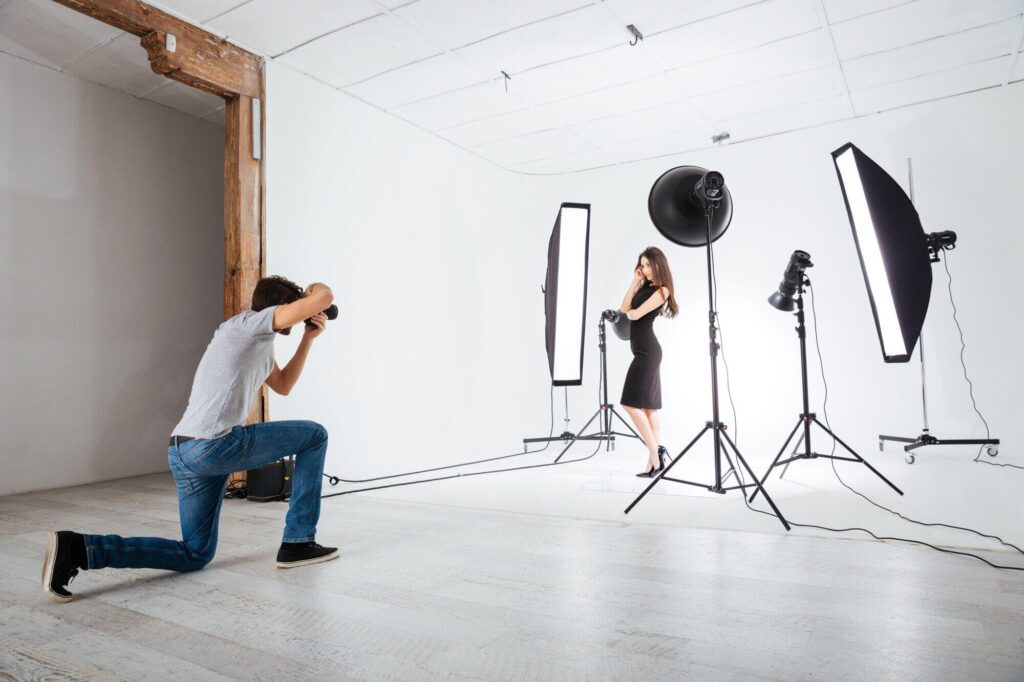What draws you into a portrait and makes it unforgettable?
A great portrait does more than capture a face. It tells a story, sparks emotion, and draws people in. Dynamic storytelling turns a simple image into something powerful.
Want to create portraits that leave a lasting impression? Keep reading to discover how to bring more life and meaning to your shots.
Focus on the Eyes
Eyes can make a portrait feel alive. They show emotion, connect with the viewer, and tell a story. If the eyes look dull, the whole image can feel flat.
Good lighting helps bring out detail and depth. Soft, natural light often works best to highlight the eyes. Catchlights, or small reflections, add sparkle and make them stand out.
Focus is just as important. The eyes should be the sharpest part of the image. If they look blurry, the portrait loses its impact. A steady hand or a tripod can help keep the focus sharp.
Use Light to Create Mood
Light can completely change the feeling of a portrait. Soft light creates a warm and gentle look, while harsh light adds drama and depth. Finding the right balance helps bring out details and emotion.
The time of day makes a big difference in how light looks. Morning and evening lights are softer and more flattering on the face. Midday sun can be too harsh, but a shade or a diffuser can help soften it.
If lighting feels tricky, help is always an option for better results. If you need help, a Cape Cod Portrait Photographer can offer guidance on using light to enhance a portrait. Learning to work with light will make every shot look more professional.
Capture Genuine Emotion
Emotion makes a portrait feel real and powerful. A natural smile or deep expression creates a strong connection. Forced poses often look stiff and take away from the story.
Talking to the subject helps them relax and show real feelings. Simple prompts or casual conversation can bring out natural expressions. Silence can also work, letting emotions surface on their own.
Candid moments often create the most meaningful portraits. Instead of rushing, wait for a genuine look or reaction. Emotion gives a portrait depth and makes it more than just a picture.
Frame with Purpose
Framing helps guide the viewer’s eye to the subject. Good framing makes a portrait feel balanced and natural. Poor framing can distract and take focus away from the person.
Using objects in the scene can create a natural frame. A doorway, window, or tree branches can add depth and draw attention. Placing the subject slightly off-center can also make the image more interesting.
Too much space can weaken a portrait’s impact. Filling the frame with the subject creates a closer connection. Every choice in framing should help tell the story clearly and powerfully.
Play with Movement
Movement can add energy and life to a portrait. A slight turn of the head or flowing hair makes the image feel more natural. Stiff poses can make a photo look flat and lifeless.
Asking the subject to walk, spin, or laugh can create real moments. These actions help them relax and show their true personality. Even small movements can make a big difference.
Loose clothing or flowing fabrics can also bring motion into the frame. A breeze or simple hand movement can add a soft, dynamic touch. Movement helps tell a stronger story.
Capturing motion takes practice and patience. A faster shutter speed can freeze action without blur. Trying different poses and angles will help find what works best.
Choose Colors Wisely
Colors can change the mood of a portrait. Soft, warm tones create a gentle and calm feeling. Bold, bright colors add energy and excitement.
Clothing, backgrounds, and lighting all affect the color balance. Choosing shades that complement the subject’s skin tone makes the portrait more natural. Too many strong colors can be distracting and take attention away from the face.
Some colors tell a story better than others. Dark shades can add drama, while pastels create a light, airy look. Picking the right colors helps bring out the emotions in the image.
Tell a Story with Props
Props can add meaning and depth to a portrait. A well-chosen object helps tell a story about the subject. It can also make them feel more comfortable in front of the camera.
Simple props work best when they fit the mood of the photo. A musician with an instrument or an artist with a brush feels natural. Using too many objects can take attention away from the person.
Props can also add texture and color to a portrait. A hat, scarf, or book can bring warmth and personality. Choosing the right item helps create a stronger, more personal image.
Experiment with Angles
Changing angles can make a portrait more interesting. Shooting from above creates a softer, more delicate look. A lower angle can make the subject appear stronger.
Different angles help show personality and mood. A slight tilt of the camera can add energy and movement. Keeping the subject centered or slightly off-center changes the focus of the shot.
Stepping closer or farther away also affects the feeling of the image. A close-up captures emotion, while a wider shot adds more context. Trying new angles helps create portraits that feel fresh and unique.
Keep the Background Simple
A simple background keeps the focus on the subject. Too many details in the background can be distracting. Clean, open spaces help make the portrait feel balanced.
Soft, neutral tones work well in most portraits. A plain wall, open sky, or simple curtain can create a calm setting. Bold backgrounds can work too, but they should not overpower the subject.
Blurring the background can also help remove distractions. A wide aperture creates a soft, dreamy effect. This makes the subject stand out more clearly.
Good background choices make portraits feel natural and professional. The goal is to highlight the person, not what’s behind them. A clean, well-thought-out background helps tell a stronger story.
Create Impactful Portraits With These Tips
Great portraits do more than show a face – they tell a story. Every choice, from lighting to framing, adds to the message. Small changes can bring more life and meaning to your shots.
Keep practicing, stay creative, and try new ideas. The more you experiment, the stronger your portraits will become. Grab your camera and start capturing powerful stories today!
And before you go, be sure to read through some of our other helpful posts!







